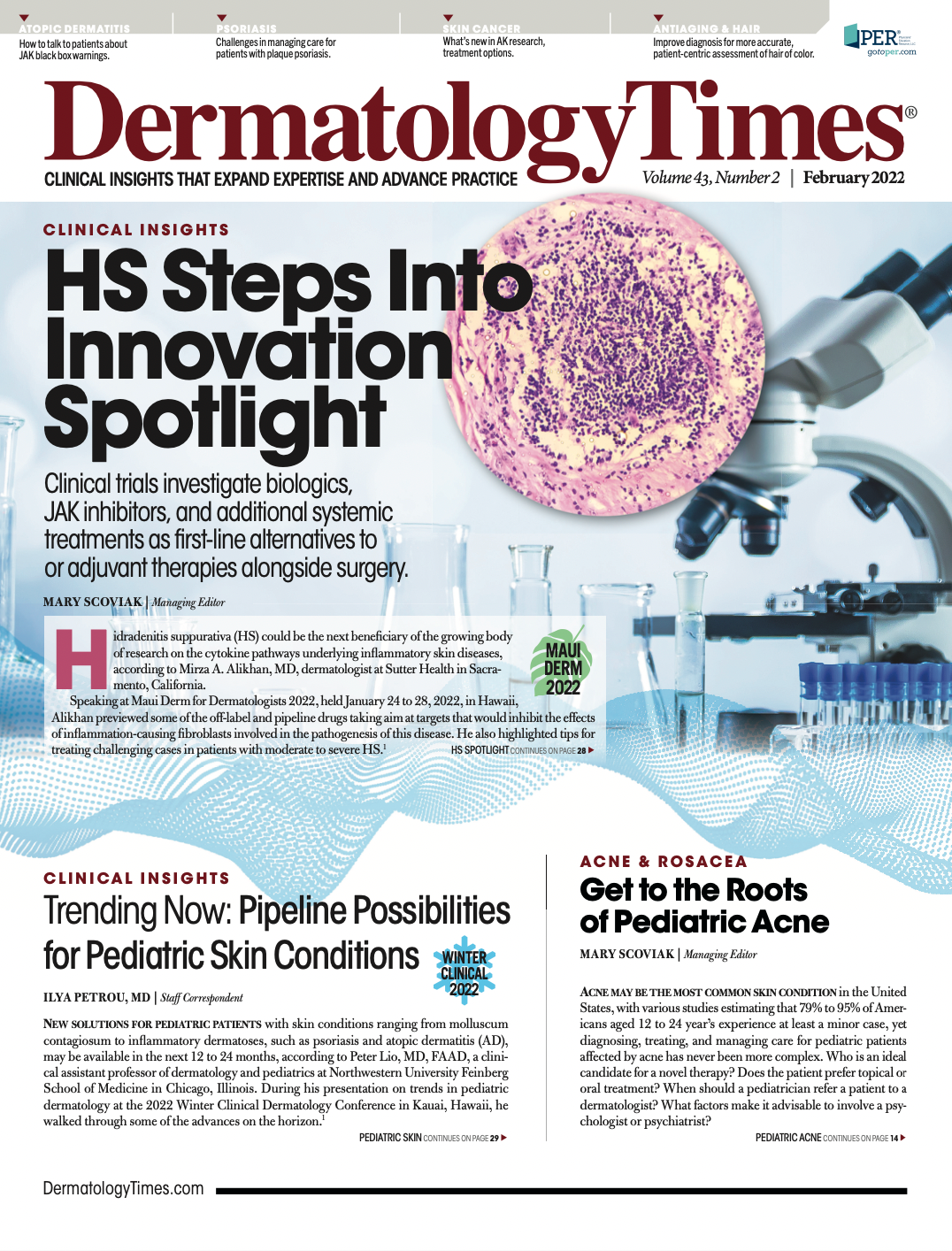- Case-Based Roundtable
- General Dermatology
- Eczema
- Chronic Hand Eczema
- Alopecia
- Aesthetics
- Vitiligo
- COVID-19
- Actinic Keratosis
- Precision Medicine and Biologics
- Rare Disease
- Wound Care
- Rosacea
- Psoriasis
- Psoriatic Arthritis
- Atopic Dermatitis
- Melasma
- NP and PA
- Skin Cancer
- Hidradenitis Suppurativa
- Drug Watch
- Pigmentary Disorders
- Acne
- Pediatric Dermatology
- Practice Management
- Prurigo Nodularis
- Buy-and-Bill
Publication
Video
Dermatology Times
Challenges in Diagnosing Plaque Psoriasis
Author(s):
Panelists look deeper into the possible challenges or barriers to making an accurate diagnosis of plaque psoriasis
Transcript:
Christopher G. Bunick, MD, PhD: I’d like to turn to Dr Torok and get her opinion on the challenges of diagnosing plaque psoriasis. We heard about some of the different forms. In your own practice, what are some of the challenges you face diagnosing or treating psoriasis, in particular also dealing with the severity issue that we’ve been discussing?
Helen Torok, MD: The challenge of diagnosing psoriasis is often these patients have been to many clinics, walk-in clinics, and other physicians and have been given a diagnosis of eczema. So now it’s my challenge to ask, “Do you really have eczema, or do you have psoriasis?” I have to educate them in the right way. I find that the location is very important in challenging my diagnosis. If it’s around the eyes, the periorbital area, is it a contact allergic reaction? Is it atopic [dermatitis]? Is it psoriasis? If it involves hands and feet, like Dr Lebwohl and Dr Wu said, is it contact dermatitis on the hands or am I dealing with psoriasis?
Often patients say, “If it’s on my body, I have a fungus. I’ve been told I’ve got tinea,” and they’re being treated with things that are used for tinea. The groin is also a problem. Is it contact allergic dermatitis, psoriasis, atopic [dermatitis], or something else? Do I have any other diseases? When I’m looking at these certain special areas, patch testing is important before you can make a full diagnosis of psoriasis. Also look for other stigma. Do they have nail pitting? Are there retroauricular areas or scalp involvement? You have to be cognizant of all the locations on the body to make sure that your diagnosis is correct and then educate the patient, “You don’t have eczema. You have palmar psoriasis. You have acral pustular psoriasis.” Those are the important things for me to look at in diagnosing and challenging patients with plaque psoriasis.
Christopher G. Bunick, MD, PhD: Let me follow that up by asking you, do you ever use a skin biopsy to help? Sometimes it’s hard to tell when patients come to you and they have this mixed presentation psoriasis. Maybe it’s atopic dermatitis. Is there still a place for a skin biopsy in determining it’s plaque psoriasis to proceed down the right path of biologics?
Helen Torok, MD: Yes, there’s still a place for skin biopsies because patients will often not believe you. Yes, you’re a dermatologist. You’re a skin specialist. And yet often I’ll have atopic dermatitis and psoriasis mixed together in the same patient. Years ago, we used to say that you can’t have atopic dermatitis and psoriasis together, but you can. Now we know you can. To prove to patients that they do have psoriasis, I will rarely do biopsies to confirm the diagnosis and make them feel more comfortable that they don’t have something more serious. But I have had patients where you biopsy and it comes back as MF [mycosis fungoides]. Sometimes you get fooled.
Christopher G. Bunick, MD, PhD: Just to clarify for our audience, MF is mycosis fungoides or cutaneous T-cell lymphoma.
Transcript edited for clarity.







